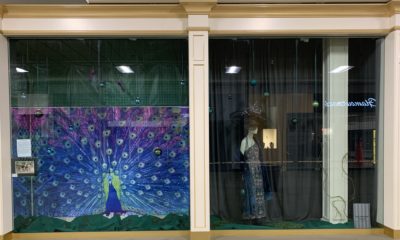THEY’RE PART OF the urban landscape, they’re everywhere. Scaffolding, known in the industry as construction or sidewalk sheds, can be seen in front of storefronts across New York City, from uptown and downtown to all places in-between. And while the cityscape continues to shine through its defining architectural styles including Beaux-Arts, art deco, Italianate, Postmodern, and Deconstructionism, the blight of sidewalk sheds diminishes the wonders of New York’s majestic city scene. They clog the streets, making navigation difficult, they cast unwanted shadows, block the sunlight and hide building façades, storefronts and signs. Adding to the dilemma of the ubiquitous sidewalk sheds, with roughly 150 miles of them stretching across city streets, is that they’re also dangerous. In addition to the ugliness of the cocoon-like structures, they’re a bit disconcerting, if not scary, in the dark of night.
Clearly, sidewalk sheds serve a purpose; to protect pedestrians from construction related debris and dangerously decaying façades in need of repair. Structurally, the sheds must be sturdy enough to standup to weather conditions, especially high winds, and have secure footing on irregular and uneven urban sidewalks. For years, the accepted solution for effective sidewalk sheds has been unsightly skeletal-like wood and metal structures that clearly inhibit access into retail stores.
The use of sidewalk sheds was mandated by the city after a tragic accident in 1979 when a young Barnard College freshman was struck and killed by falling debris from a Columbia University building. Local Law 11, “The Facade Inspection and Safety Program” was subsequently put into effect requiring the regular inspection of building facades. If the buildings failed inspection, the owners were required to install sidewalk sheds.
Not all sidewalk sheds have to be ugly, and some retailers take it into their own hands. The Ralph Lauren men’s store in the Rhinelander Mansion on Madison Avenue, for example, arguably one of the most beautiful stores in New York, currently has a sidewalk shed enveloping its French Renaissance Revival façade. However, unlike the traditional shed, and in keeping with the Ralph Lauren standard of excellence and aesthetics (and projected brand image), this shed is beautiful as well as highly functional.
While sheds are effective, they can also be a visual blight on New York’s streets. The Bloomberg administration was not pleased with the spread of more than 3000 unsightly sidewalk sheds across the city, and in 2010, Mayor Michael Bloomberg put forth a design competition to develop a more effective and aesthetically pleasing solution to the dreaded spindly sidewalk shed.
New York-based Urban Umbrella won the Bloomberg competition hands down with a concept that was clean, crisp and with fewer vertical uprights, thereby allowing greater visibility to storefronts while providing more sunlit, open and airy sidewalks.
Advertisement
Another competition was launched in 2015 by the New York Building Congress, an alliance of businesses and governmental agencies with the mission of promoting and supporting design, construction and real estate in New York. The hope was that the competition would generate fresh ideas to solve the challenge of the unsightly sidewalk shed, particularly as New York continues its ongoing building and construction expansion.
The four winners of the New York Building Congress competition, selected by a jury of 14 architects, engineers, and city officials were Gensler’s G-Shed, Gannett Fleming’s ScaffoldWing, Francis Kauffman’s Side+Ways+Shed, and PBDW Architects and Anattos Engineering Associates’ UrbanArbor.
Gensler’s G-Shed solution utilizes modular vertical components, which result in a colonnade-like effect, and can be positioned in a variety of configurations. Gannett Fleming Engineers and Architects ScaffoldWing was inspired by wings stretching out over a building site. Francis Cauffman’s winning proposal features colorful fabrics wrapped around the vertical structural components; the concept brightens the walkway with LEDs. UrbanArbor, is just as its name suggests, a series of Y-shaped verticals inspired by the branches of a tree.
Also in 2015, Zaha Hadid demonstrated that sidewalk sheds need not be eyesores. The legendary architect, known for her mellifluously flowing futuristic buildings, designed a sleek canopy-like structure that extended along a section of the High Line adjacent to a building she designed next to the elevated park.
As retailers struggle to bring customers back into experiential brick-and-mortar environments, projecting an open and welcoming message, even when under construction, is vital. Several design options and proposals are proving that the omnipresent sidewalk shed does not have to be an eyesore, but rather they can be inviting and appealing.

 Photo Gallery1 week ago
Photo Gallery1 week ago
 Headlines4 days ago
Headlines4 days ago
 Headlines1 week ago
Headlines1 week ago
 Headlines2 weeks ago
Headlines2 weeks ago
 Headlines1 week ago
Headlines1 week ago
 Designer Dozen1 week ago
Designer Dozen1 week ago
 Headlines1 week ago
Headlines1 week ago
 Headlines1 week ago
Headlines1 week ago





















